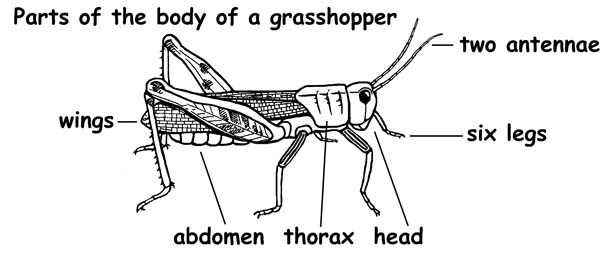

Scientific illustration is a lesson in seeing (observation) as well as drawing. You may think you know what a grasshopper looks like, but when you look really closely, you will begin to notice things that you might not have seen before. To learn how to draw scientifically, try this exercise.
1) Draw a grasshopper from memory. Save the drawing, but put it aside to look at later.
2) Look at this grasshopper photograph. Take your time. Study how the grasshopper looks. Draw a grasshopper again, referring to the photograph for reference. Save the drawing, but put it aside to look at later.
3) Now study the grasshopper photograph again and answer these questions.
4) When you have studied the grasshopper close enough to answer these questions, draw it a third time, referring to the photograph for reference and keeping the points you discovered in mind. Take your time.
5) Pull out all three drawings. Do you notice a difference in how your drawings look? Which one is the most accurate rendering of the grasshopper? Do you think that you learned more about drawing or observation doing this activity? Do you think you will see more the next time you draw from a picture?
6) Using the sample diagram as a guide, label your illustrated grasshopper. Try another!

